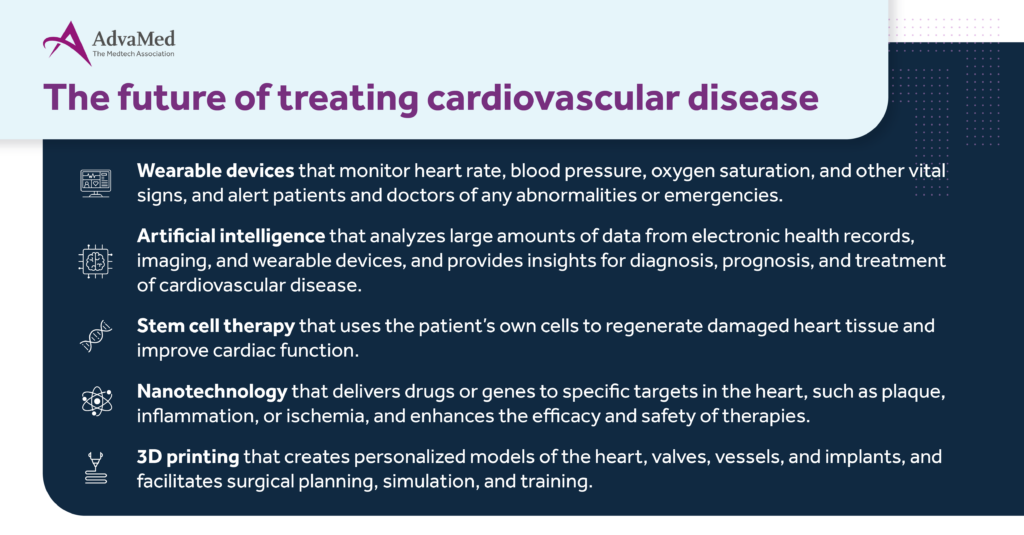Cardiovascular disease (CVD) is the leading cause of death and disability in the United States, affecting more than 120 million adults and costing over $200 billion annually. CVD encompasses a range of conditions that affect the heart and blood vessels, such as heart attack, stroke, heart failure, arrhythmia, and valve disease, but each of these conditions have one thing in common: they impair the quality of life and well-being of millions of Americans, as well as their families and caregivers.
Fortunately, medical technology offers hope and solutions for people living with CVD. Since the first electrocardiogram (ECG) machines were used to diagnose arrhythmias more than 100 years ago to the wireless pacemakers first implanted in the last decade, medical technology has improved how patients and their health care providers prevent, diagnose, treat, and manage CVD. These innovative devices can restore normal heart function and rhythm and track and control risk factors. Moreover, artificial intelligence, machine learning, and telemedicine can enable early detection, personalized care, and remote monitoring of CVD.
Medical technology has improved how patients and their health care providers prevent, diagnose, treat, and manage CVD.
At AdvaMed®, we represent more than 400 medical technology companies that are committed to advancing innovation and improving patient outcomes. Our members are constantly developing and delivering new and better ways to address CVD and other chronic diseases. In fact, studies have found that medical technology has reduced fatalities from heart disease and stroke by more than half since 1980, while new advancements in surgical procedures and innovative treatment options such as stents are improving quality of life for patients around the world. Today, unlike ever before, treating structural heart disease is easier and safer as surgeons use minimally invasive, catheter-based procedures developed by medtech companies.

However, medical technology alone is not enough to combat CVD. We also need to promote a heart-healthy lifestyle that includes regular physical activity, balanced nutrition, stress management, and smoking cessation. These lifestyle changes can lower the risk of CVD and its complications, as well as improve overall health and wellness. We also need to increase awareness and education about CVD and its symptoms, especially among women, minorities, and underserved populations, who are often underdiagnosed and undertreated.
As we observe American Heart Month this February, let us celebrate the achievements and potential of medical technology in addressing CVD, and let us also commit to living a heart-healthy life. Together, we can make a difference in the lives of millions of Americans and their loved ones.
Learn more about medtech’s role in living a heart-healthy life here.